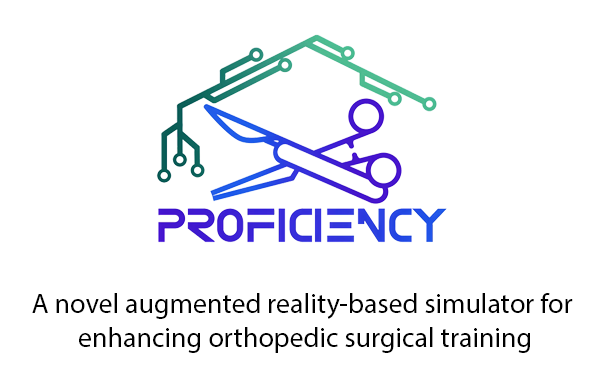Abstract
Background: Total Hip Arthroplasty (THA) is a well-established and common orthopedic surgery. Due to the complexity involved in THA, orthopedic surgeons require rigorous training. However, the current gold standard, the tutor-guided and -evaluated apprenticeship model is time-consuming, costly, and poses risks to patients. There is a pressing need for additional training resources to enhance the efficiency and safety of the training process. In this work, we present a novel Augmented Reality (AR)-based simulator designed for THA that helps enable a new self-paced training and learning paradigm without the need for instructors.
Methods: The simulator reduces the need for instructors by integrating an AR guidance module and an automated performance evaluation module. Three types of AR guidance were developed: Overlay, Virtual Twin, and Sectional Views. A feasibility study was conducted with five resident surgeons and two senior surgeons to compare these guidance methods quantitatively and qualitatively. The automated performance evaluation module was assessed against manual performance evaluation using Bland-Altman analysis with limits of agreement (LoA) and Mann-Whitney U tests.
Results: The quantitative feasibility results indicate the efficacy of the developed AR guidance, characterized by mean transitional and rotational deviation errors below 3 mm and 3 degrees. Based on the qualitative results, we provide recommendations for efficient AR guidance designs. The Bland-Altman analysis results (0.22±1.32mm with LoA -2.37 to 2.81 mm for distance deviation, 0.94±2.41 degrees with LoA -3.78 to 5.66 degrees for yaw deviation, -0.34±1.30 degrees with LoA -2.90 to 2.22 degrees for pitch deviation) and p-values of Mann-Whitney U tests (0.64 for distance deviation, 0.12 for yaw deviation, 0.11 for pitch deviation) indicate no statistically significant differences between the automated and manual performance evaluation at a significance level of 0.05.
Conclusion: This work shows the potential of AR-based simulators in introducing a novel, data-driven approach to open surgery training in orthopedics, enabling surgeons to individually assess and improve their progress.
Keywords: Augmented reality; Orthopedic surgery; Surgical education; Surgical simulator; Surgical training.
Luohong Wu 1, Matthias Seibold 2, Nicola A Cavalcanti 2, Jonas Hein 3, Tatiana Gerth 4, Roni Lekar 5, Armando Hoch 6, Lazaros Vlachopoulos 6, Helmut Grabner 7, Patrick Zingg 6, Mazda Farshad 6, Philipp Fürnstahl 2
Affiliations
- 1Research in Orthopedic Computer Science, Balgrist University Hospital, University of Zurich, Lengghalde 5, Zurich, 8008, Switzerland. Electronic address: luohong.wu@balgrist.ch.
- 2Research in Orthopedic Computer Science, Balgrist University Hospital, University of Zurich, Lengghalde 5, Zurich, 8008, Switzerland.
- 3Research in Orthopedic Computer Science, Balgrist University Hospital, University of Zurich, Lengghalde 5, Zurich, 8008, Switzerland; Computer Vision and Geometry Group, ETH Zurich, Ramistrasse 101, Zurich, 8092, Switzerland.
- 4Institute of Data Analysis and Process Design, School of Engineering, Zurich University of Applied Sciences, Technikumstrasse 81, Winterthur, 8400, Switzerland.
- 5Institute of Computer Science, School of Engineering, Zurich University of Applied Sciences, Obere Kirchgasse 2, Winterthur, 8401, Switzerland.
- 6Department of Orthopaedics, Balgrist University Hospital, University of Zurich, Forchstrasse 340, Zurich, 8008, Switzerland.
- 7Institute of Computer Science, School of Engineering, Zurich University of Applied Sciences, Obere Kirchgasse 2, Winterthur, 8401, Switzerland; Institute of Data Analysis and Process Design, School of Engineering, Zurich University of Applied Sciences, Technikumstrasse 81, Winterthur, 8400, Switzerland.
